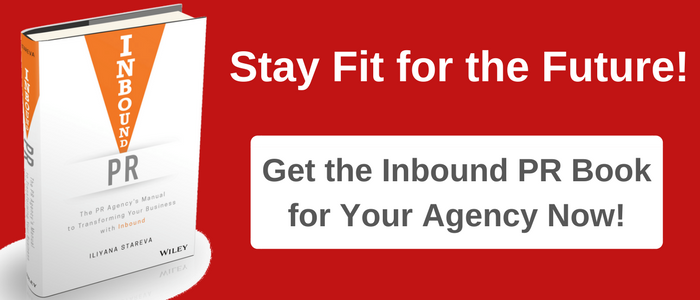With the massive embracement of social and web applications, the arsenal of tools and techniques PR professionals are required to use in their work is constantly growing. However, the overall purpose of these activities remains the same: In my latest article for Behind the Spin I note that PR is about influencing audiences and adding value. Influencing audiences has a lot to do with persuasion.
of social and web applications, the arsenal of tools and techniques PR professionals are required to use in their work is constantly growing. However, the overall purpose of these activities remains the same: In my latest article for Behind the Spin I note that PR is about influencing audiences and adding value. Influencing audiences has a lot to do with persuasion.
Important to note here is that persuasion is very different from manipulation. Persuasion, unlike manipulation, is not spin. Many think of PR as spin, but that's just not what PR aims to achieve. Communicators' purpose it to establish and maintain goodwill and mutual understanding between clients and their publics by building and defending reputations. That includes among other things engaging with audiences, talking to and most importantly with various publics, making use of a wide range of tools to communicate a message in the most suitable way - text, audio, images, video.
PR people aim to convey a message, a message that gets heard and understood, that moves people to undertake a specific action after receiving that message. This makes everything we do about persuasion - writing is about persuasion, storytelling is about persuasion, social media sharing is about persuasion.
Persuasion is indeed an art, but it can also become a skill, an ability that is very important for PR professionals. To develop that know-how I would advise communicators to familiarise themselves with Robert Cialdini's work about influence and the psychology of persuasion, where he identifies six universal factors that guide human behaviour and decision-making.
Before reading WTF I hadn’t heard of Robert Cialdini. I was interested, so I decided to learn a little bit more about his work. And then, I stumbled upon a video that explains the famous six principles of influence.
To give you an overview, I've listed and briefly explained how the principles relate to PR work and how by using them professionals can influence behaviour in an ethical way.
At the end, you can find the video, which I urge you to watch. It's really great - cool animations, excellent narrative, thorough explanations backed up by research and examples.
The Art of Persuasion: Six Principles of Influence
#1 Reciprocity
People feel an obligation to give back when they receive, as if to return the favour. This makes it more likely that people will say "yes" to those that they owe.
What's the learning here? Well, it's to be the first to give and make sure it is personalised and unexpected. This way, PR professionals can build good relationships with various publics, take for example journalists. It's not just about offering them a story, but about helping them make that story work for them - give them additional contacts for interviews, offer them exclusive products only to them etc. This will get you remembered and one day journalists will come to you for stories.
#2 Scarcity
We want more of those things that we have less or can get less of. Even when the service or product remains exactly the same, just the fact that it is now offered less, makes it more desired.
When it comes to scarce resources it's not just about the benefits, but about what is unique, i.e. scarce, about your product or service, or in the realm of PR about the client and the client's products or services, and about the opportunity costs - what do people stand to lose, if they don't choose that product or service.
In this case, whenever you are pitching or starting a blogger/vlogger activation, make those journalists and bloggers/vloggers feel special by offering them something exclusive, something that no one else is getting but them.
#3 Authority
As every Edelman Trust Barometer so far has shown, people trust and follow the lead of credible and knowledgeable experts. These experts are often tech people and company employees or a person like yourself, but not corporate leaders and CEOs.
This is a challenge for leaders as well as for PR people, as PR professionals are expected to guide the communication between a leader and company publics. Key here is to first build that trust and credible authority before attempting to influence and persuade people.
Here's where the major difference between advertising and PR comes in play: Advertising is about saying "I'm great", PR is about persuading others to say "He/She is great!".
#4 Consistency
People like to be consistent with the things they've previously said or done. This principle is therefore about asking for small commitments that people are OK with making.
To initiate and establish consistent change (e.g. improving company reputation) PR professionals have to encourage voluntary, active and public commitments. Those might for example be creating a loyal Facebook following of people who on their own seek to engage with your content and come again and again to your page wanting more.
#5 Liking
This one's easy: People prefer to say "yes" to those they like. But understanding the cause for liking is the difficult part.
There are three important factors that underline liking: We like people who are similar to us, we like people who pay us compliments, and we like people who co-operate with us towards mutual goals.
Perhaps the last factor is most significant for PRs because mutual goals and effective co-operation are imperative for establishing and maintaining mutually beneficial relationships and interactions. But the single most important thing that actually builds and keeps a relationship is trust. Trust, however, starts with getting to know each other by exchanging personal information and identifying common interests. PR pros are therefore required to very well know and understand their audiences (well, and to like them) if they want to establish a reciprocal relationship.
This is very important when it comes to pitching to the media. You have to know who you are pitching too and what they are writing about. So, do your research, read previous articles of those journalists, or thoroughly check the blog/vlog of that influencer to know what topics they are publishing. You can't just pitch them anything. Show them that you care.
#6 Consensus
When people are uncertain they look at the actions and behaviours of others to determine their own. We constantly compare ourselves, our struggles, our successes and accomplishments to those of others. People are after all competitive creatures, so if you want to move them and motivate them to undertake a specific action, show them what others have done and how they have benefited from it.
Of course, that's difficult when you're pitching your stories. You can't point out to journalists or bloggers how others have covered your story (that would be bad!). But you can always get inspired by others - when you're working on your next story or campaign, do your research, have a look at what others have done. This would certainly give you some ideas about what you can do and how you can do it even better so that it works for you.
Do you apply any of these principles in your work?
Image from YouTube video







